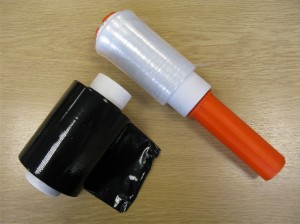Cast film or blown film?
What’s the difference between cast and blown films?
It all starts with pellets of polyethylene resin which are melted down. In the case of cast film, this molten material is run through an extruder and onto a big, smooth, chilled roller, which cools it rapidly. This gives it a clear, regular appearance and high gloss texture
In the case of blown film, on the other hand, the melted polyethylene has air blown through it to form an enormous bubble, which is then cooled slowly before being flattened and shaped. The longer cooling time gives it a matt, hazy finish.
Which one to choose depends on a number of factors.
Cast Film is quieter when it’s unwound, which is an advantage in a workplace where noise is an issue. It stretches more easily, which means it needs less force to be applied effectively. It is tear-resistant, but less so than the thicker blown film, and slightly sticky on both sides. The clear finish makes it easier to identify what’s on the pallet underneath.
Blown Film is tougher and softer, and has a tacky finish on one side which helps it hold loads securely without sticking to other pallets. It is much noisier when unwound, and has a higher degree of puncture resistance. The hazy finish helps minimise glare in a heavily lit work environment. Blown film can cover more pallets per roll than cast, and stretches further but requires more force to achieve that.
If you’ve got any doubts about whether to choose cast or blown film, please don’t hesitate to get in touch with our friendly team who are here to discuss your needs and answer any questions you might have!

